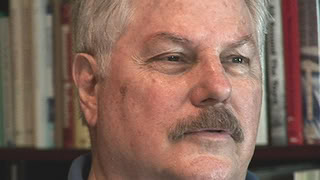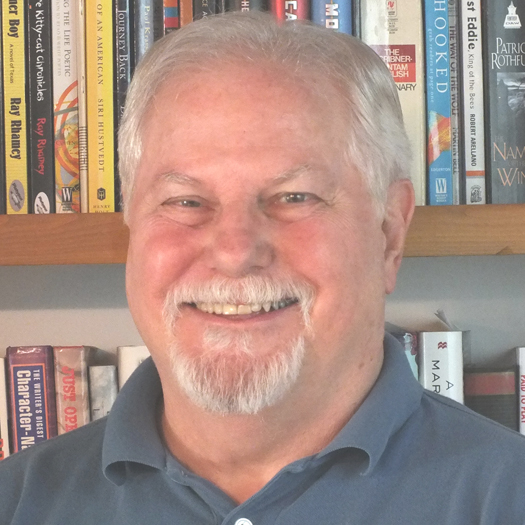Toggling from editor to writer and back again
By Ray Rhamey | August 15, 2007 |
 We welcome our newest contributor, Ray Rhamey, to Writer Unboxed. We’re sure that you’ll find Ray’s expertise about editing fiction and his tales on the grueling process of submission as insightful as we do. Enjoy!
We welcome our newest contributor, Ray Rhamey, to Writer Unboxed. We’re sure that you’ll find Ray’s expertise about editing fiction and his tales on the grueling process of submission as insightful as we do. Enjoy!
Every writer is, to some extent, an editor. And every editor is, to some degree, a writer. I’m one of those people who works both sides of the street—I edit novels, and I write them. The editing part you may have seen on my blog, Flogging the Quill. The writing part is exhibited there as well (otherwise there wouldn’t be any posts, would there?) The novels are so far unpublished, though the latest is “on the back burner” with an agent—she responded to it this way: “I loved it. . .but I don’t know what to do with it.” She’s thinking that part over, but not committing. Argh.
Anyway, Kath and Teri wondered how I toggle back and forth between editing and writing. I’d never thought of that before. It’s the kind of thing that you don’t think about, just as in a first draft you don’t stop to think of how you select a particular verb, you just do it.
I’m thinking that with me it’s not toggling, not going back and forth, but a blended focus, a composite that’s been created by years and years of doing both. I look at a sentence and its strengths and shortcomings are immediately apparent, and how to rewrite it is as well. In my particular skull, that comes from a natural talent for language and maybe learning diagramming in high school.
Practice is part of it, too. I spent a couple of decades in advertising as a writer and creative director, wearing essentially the same two hats. Having your copy critiqued by a wide range of people on every assignment and researched for effectiveness has led, I think, to a reflexive assessment of how well a particular bit of language is doing its job, and then a sense of how to make it better—if need be, that is.
But perhaps there is a bit of toggling going on. I begin an edit as a reader, taking in the narrative as a reader would—but behind the scenes my critic part is busy assessing it. I don’t think the writer part is so much engaged at that point. I should do a first reading without making any notes, but when I’m reading onscreen and my critic’s eye spots a flaw or a weakness, it’s impossible for me to not stop and make a note. When it’s time for line editing, I print the manuscript out and begin again at the beginning.
And perhaps there’s toggling between editor and writer when I do the line editing. Oh, there’s a teacher/coach entity in the mix as well—I try to explain “why” as well as show “how.” Let me give you an example from a recent edit.
The opening sentence of the novel was this:
The full moon cast eerie shadows on the dust-covered mahogany walls of the grand hall.
Here’s the comment I made to the writer:
I see what you’re trying for here, but think this could be better. For example, what exactly is an “eerie shadow?” I don’t get much of a picture from that. And how is moonlight inside the house? Thoughtstarter: Gnarled shadows cast by the full moon through the mansion’s floor-to-ceiling windows crept along the grand hall’s dust-covered mahogany walls. Note: what to look for is imagery that paints a picture versus something that simply “tells” us.
My mix of reactions is complex: the reader part of me sorta understood “eerie shadow,” but didn’t, really. The editor part had me tell the writer that this was weak because it failed to create a picture in the reader’s mind. The coach part included a mini-lesson on “telling.” And the writer part jumped in with a for-instance on how to perhaps achieve the writer’s goals by using imagery of shadows creeping to visualize “eerie,” and yet to do it within her “voice.” Upon re-reading, I feel that the for-instance is a bit complicated, but I do this pretty much on the fly, and its purpose is to illustrate, not be final copy.
I guess there is toggling, to some degree, but like a scrambled egg the process is so well blended that it’s difficult to tell where the yolk leaves off and the white begins.
For what it’s worth.










thanks, ray. i think i’ve learned the most about writing during the editing process, as torturous as it can be at times. and giving the examples of how to ‘show’ the eeriness rather than just say eerie is how i have learned to write. (not that i’m saying i now do things particularly well; i am still in a deep learning phase). having read your flogging blog, what i like about your style of editing and critique is that you have chosen to make it a learning experience as opposed to a slaying experience. i have known many budding writers that have stopped writing after a devastating editing/critiquing experience. one question on your mastery of toggling: is it still hard for you to edit your own work, even though you have so much experience with the editing process?
Thea, the answer is yes and no. I have no difficulty in line-editing my text–a sentence is a sentence is a sentence.
The hard part is gaining enough distance to see flaws on the storytelling side–too much exposition, lack of pace, etc. Letting lots of time elapse helps, but I never get there.
I’ve posted novel openings that nagged at me as somehow being not right on Flogging the Quill, and insights from readers have been a huge help. I also get help from critique group members.
Ray
Do you ever turn off the “internal” editor when you read a book? I have a hard time with that. Sometimes when I read an incompetent novel, I start re-writing it.
If the writing is of professional caliber, my editor self stays in its corner, probably taking notes on how the good guys/gals do it.
But the second sloppy narrative or storytelling glitches (especially continuity) show up, I’m turned off and will probably not finish the book (unless the story is truly gripping).
Although I do consciously notice when I come to what Elmore Leonard calls “the parts you skip.”
I spent a lot of time creating TV commercials in my previous life, and I still evaluate the commercials I see–it’s reflexive. There are soooo many crummy ones.
Ray
You said: “Having your copy critiqued by a wide range of people on every assignment and researched for effectiveness has led, I think, to a reflexive assessment of how well a particular bit of language is doing its job, and then a sense of how to make it better—if need be, that is.”
Yes, yes and yes. I worked for a year as a staffer at Prevention Mag, and I learned so much during that time–particularly because any copy I produced had to go through so many hands. Sometimes the commentary was overwhelming, sometimes contradictory, but usually it was informative on some level.
As a freelancer, I have less opportunity to receive this kind of feedback (aside from a generic but much appreciated: “Good one, thanks.”). But writing nonfic articles at a rapid-fire pace has helped me to meld writer and editor; I don’t have the time to turn off one for the other to take command. Not for long, in any case.
Thanks for this post, Ray. Lots of good stuff here. And welcome to Writer Unboxed! It’s great to have you on-board.
There ARE lots of bad commercials out there. I sit up and take notice when one surprises me into paying attention.
You said: “Although I do consciously notice when I come to what Elmore Leonard calls “the parts you skip.””
Well there’s something I’d like to hear more about. Maybe another blog post when you’re up for it?
Hi Ray!
I think it’s easier to edit others (or criticize) than to edit ourselves. Any advice on how to be most effective in editing ourselves?
Nienke
The key to being as effective as possible is gaining “distance” from your work. I’ve a post on Flogging the Quill about ways to help with that. I’ll put the link below, but if it doesn’t work, Google “flogging the quill distance” (no quotes) and it should come up.
https://www.floggingthequill.com/flogging_the_quill/2004/11/ideas_for_creat.html
Ray
Distance from my work is key for me.
hi nice post, i enjoyed it